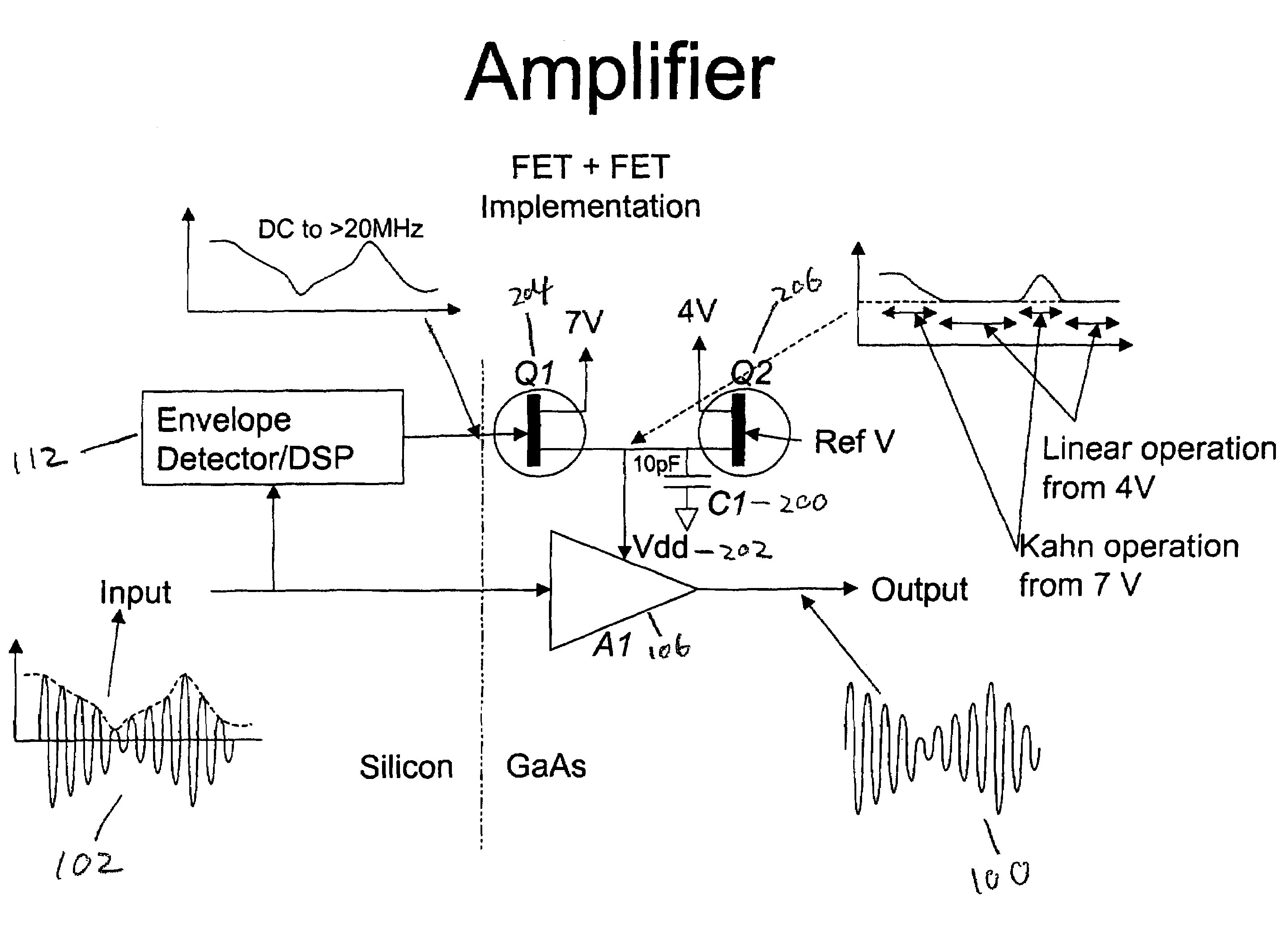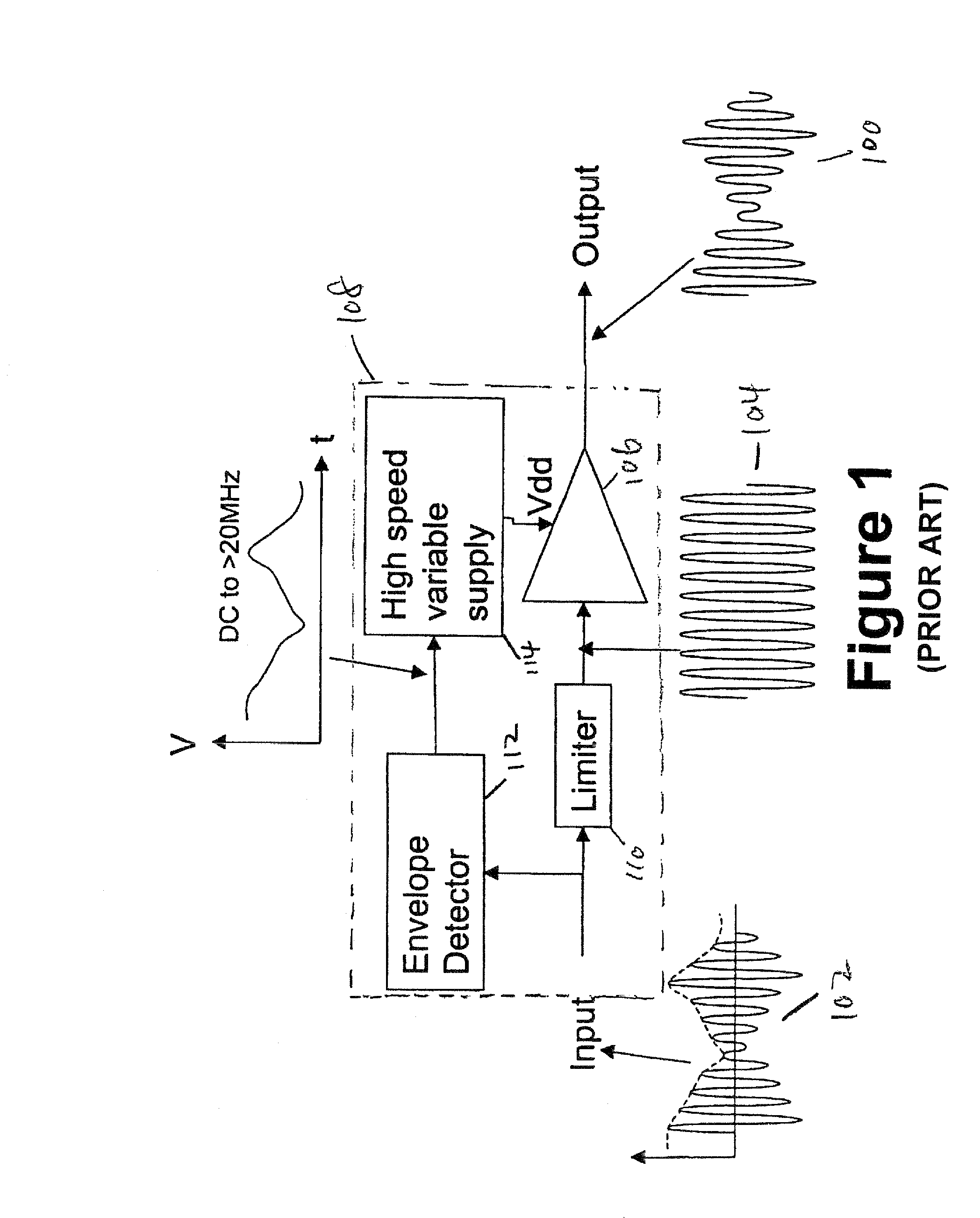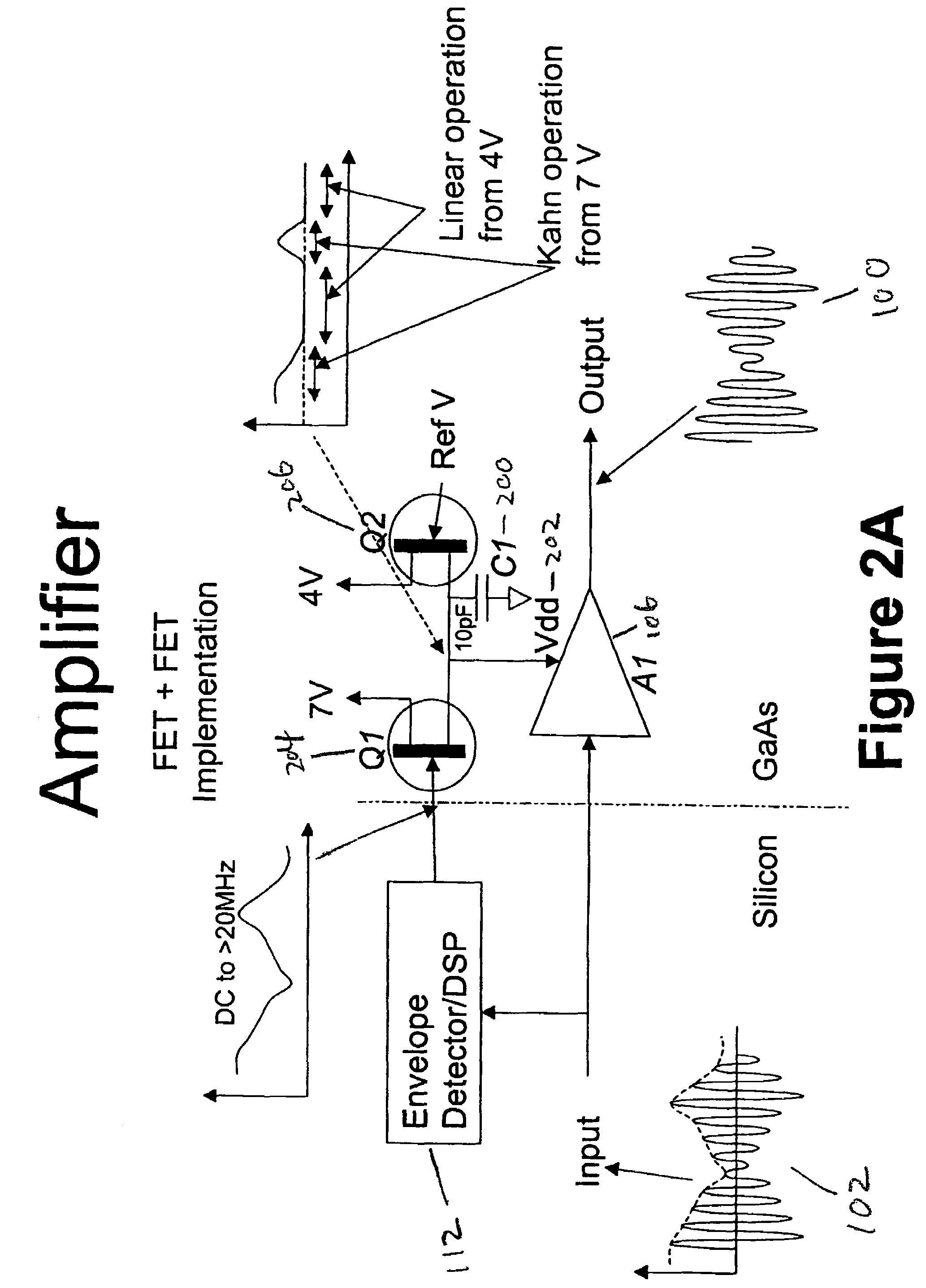Power amplifier
a power amplifier and amplifier technology, applied in the direction of amplifiers, amplification control, electrical equipment, etc., can solve the problems of variable power supply rise/fall times and delays, ee&r amplifiers use an expensive and complex switching variable power supply, and the overall cost and complexity of variable switching power supply, so as to optimize the efficiency and linearity of the amplifier, and the effect of discharging more power
- Summary
- Abstract
- Description
- Claims
- Application Information
AI Technical Summary
Benefits of technology
Problems solved by technology
Method used
Image
Examples
Embodiment Construction
[0020]In various embodiments of the invention, improved methods and systems for amplifying a signal are provided. Specifically, systems and methods for amplifying a signal through a lossy switch element tied to two or more voltage sources are provided. In the preferred embodiment, envelope information from the signal is used to smoothly transition between the two or more voltage sources to provide signal amplification over an increased range.
[0021]For signals having a large peak-to-average power ratio, linear power amplifiers become very low in power-added efficiency. This is because the amplifier must be backed off (at its input) most of the time from the signal level providing its highest efficiency. This is necessary in order to be able to amplify the signal during its peak power without clipping.
[0022]Another technique for signals having a large peak-to-average power ratio is the Kahn architecture (also called “Envelope Elimination and Restoration” or EE&R). Here, the input sign...
PUM
 Login to View More
Login to View More Abstract
Description
Claims
Application Information
 Login to View More
Login to View More - R&D
- Intellectual Property
- Life Sciences
- Materials
- Tech Scout
- Unparalleled Data Quality
- Higher Quality Content
- 60% Fewer Hallucinations
Browse by: Latest US Patents, China's latest patents, Technical Efficacy Thesaurus, Application Domain, Technology Topic, Popular Technical Reports.
© 2025 PatSnap. All rights reserved.Legal|Privacy policy|Modern Slavery Act Transparency Statement|Sitemap|About US| Contact US: help@patsnap.com



